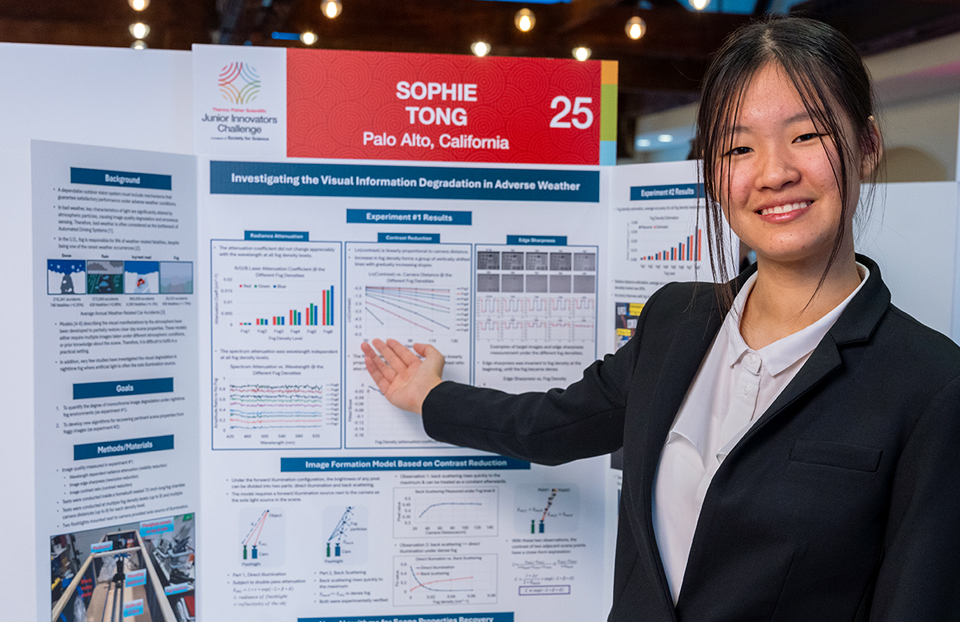Sophie Tong
8th Grade, Challenger School
Palo Alto, CA
People have a hard time seeing in dark nights or fog, making driving risky. Computer systems aren’t too different. “I was surprised to learn how big of a challenge bad weather was in outdoor vision applications,” Sophie says. “For example, bad weather is often considered the bottleneck of Automated Driving Systems.” Not only that, she learned that between 1982 and 2013, fog was associated with 40 percent of airline deaths when weather was bad. Sophie decided to develop computer algorithms that could analyze scenes in the dark and fog.
Investigating the Visual Information Degradation in Adverse Weather
View Poster
“Since vision in adverse weather was a broad topic, I limited the scope to nighttime fog under the illumination of artificial light,” Sophie says. She built a sealed, lightproof fog chamber, and mounted a camera and two lights inside it, to simulate a car with its headlights on. Using laser lights, Sophie took measurements from the mounted camera to study how much the light attenuated over eight different levels of fog. She also used a fixed black and white image to see how much sharpness and contrast degraded.
With her data, she tested three algorithms to estimate fog density, calculate the distance between objects, and recover a sharp image from the foggy scenes. Her three models performed at 78, 80 and 88 percent accuracy.

Beyond the Project
Sophie got elected as Vice President of her student council, and she won using something surprising: humor. “My campaign was based on jokes about my height,” she says. “I now have the goal to help students find their own superpower and to approach problems with a sense of humor and positiveness.” While confident in her sense of humor, Sophie says she has imposter syndrome about her research, but she’s determined to focus on her love of science. “I’m sharing this experience to show other STEM kids that imposter syndrome is a hurdle, not a roadblock,” she says.

